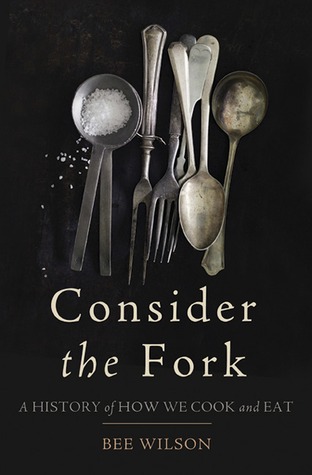 Confession: I would be perfectly content to be housewife for the rest of my life. I'm a traitor to my gender, I know. I should be trying to make myself respected as a working woman in a corporate world dominated by men and all that jazz, but really, I would be perfectly content to stay at home and cook all day long. Okay, so I'm not such a huge fan of doing dishes or laundry, but I could get past that. Being left alone all day to do some quick cleaning, read a good book, and whip up a cappuccino fudge cheesecake (recipe from Smitten Kitchen) sounds like absolute heaven. I would probably become morbidly obese in short order, because even a fast metabolism can't cope with delicacies like that every day, but hey, my apartment building has a gym in it. I could totally start running on the treadmill with all the time I'd have on my hands!
Confession: I would be perfectly content to be housewife for the rest of my life. I'm a traitor to my gender, I know. I should be trying to make myself respected as a working woman in a corporate world dominated by men and all that jazz, but really, I would be perfectly content to stay at home and cook all day long. Okay, so I'm not such a huge fan of doing dishes or laundry, but I could get past that. Being left alone all day to do some quick cleaning, read a good book, and whip up a cappuccino fudge cheesecake (recipe from Smitten Kitchen) sounds like absolute heaven. I would probably become morbidly obese in short order, because even a fast metabolism can't cope with delicacies like that every day, but hey, my apartment building has a gym in it. I could totally start running on the treadmill with all the time I'd have on my hands!How does all of this connect with Consider the Fork? Well, Consider the Fork is "A History of How We Cook and Eat," and that cooking part has largely been the work of women for centuries. Millenia, even. Which didn't work so well when women wore long skirts and sleeves that easily caught on fire, but hey, we're past that now in my part of the world, and I can feel safe whipping up some deep-fried ravioli on a gas stove while wearing a T-shirt. Anyway, the book is broken up into different topics such as "Knife," "Fire," Ice," "Grind," and "Eat," with each focusing on a different area of the kitchen and how it has evolved. For example, "Fire" is not only about how people have cooked over fires in different parts of the world, but also how the stove evolved and how cultural wants and needs changed that, and how the stove itself changed how we cook and eat. "Eat" is about silverware, chopsticks, and other eating utensils, and how they fit into our culture of food. Each chapter is also followed by a one or two-page snippet about something more specific, like the Italian mezzaluna knife or the nutmeg grinder.
The book is full of little anecdotes to focus different parts, and it is immensely readable, especially for a foodie like myself. Wilson's writing portrays vivid images of meals from all periods of cooking, and makes every single one of them sound appetizing, even when they really weren't. But what's so different about the book isn't about how humans shaped cooking; it's more about how cooking shaped humanity. For example, that ever-so-slight overbite that I spent three years in braces to obtain? That overbite that's supposedly the "perfect" smile for those of my generation? Yeah, that wouldn't exist without the adaptation of using knives and forks to eat, rather than just ripping stuff up with our teeth. And the invention of pots and pans completely changed how we eat! Isn't that awesome? I think so. The book also appears to be pretty well-researched in the areas it covers, though there aren't footnotes so I can't confirm that entirely. There is a "Notes" section, but honestly, I didn't read it, and it's not very long.
My only complaint--and it is a fairly large one--is that Wilson focuses on the USA and UK for her history of food and eating. Coming in third place would probably be China. I would have liked to learn more about how people ate all over the world. What about in Polynesia? What about in India, or Iran? What about the Eskimos? What kind of stuff did they eat, invent, or adopt, and how did it change their cultural evolution? There's probably, to some degree, a problem with sources in these areas (and language barriers are a bitch) but I would have been very interested to see a more globally-comprehensive history. Oh, and another, smaller one--the "ye olden days" portions focus mainly on the upper classes. More "recent" accounts focus more on the middle class. I would have liked to see more class, as well as geological, diversity. Still a good, easy read, though, and it might just change the way you look at what goes into your mouth, and how that stuff gets there!
3 stars out of 5.
No comments:
Post a Comment